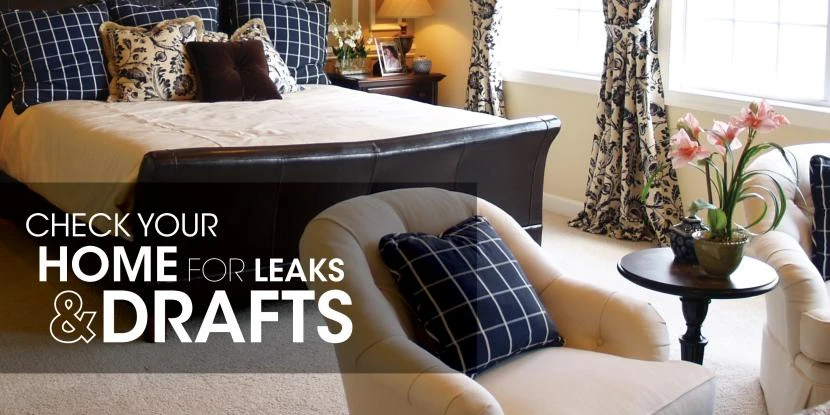
Aire Serv experts recommend checking your home for leaks and drafts to improve energy efficiency and comfort.
- Inspect windows and doors for gaps or cracks
- Use weatherstripping or caulk to seal leaks
- Check electrical outlets and attic hatches
- Test for drafts with a candle or incense stick
- Schedule professional inspections if needed
Are you heating the whole neighborhood? It may not be because you left the door open, but because your home is leaking. Leaks and drafts in your home don’t just put the freeze on your family; they can waste up to one third of your heating budget!
What can you do to stop leaks and drafts?
Find them! Hold tight to all the heated air you paid for by keeping it contained. Air leaks are commonly found…
- Behind knee walls (side walls that supports attic rafters)
- Attic hatches
- Wiring holes (cable, electrical, phone lines)
- Plumbing vents
- Venting for appliances (dryers, stoves, vent hoods)
- Open soffit (the box that hides the recessed lights)
- Recessed light
- Furnace flues and duct chase ways (the boxes/wall features that hides ducts)
- Basement rim joists (where the foundation meets the wood framing)
- Windows and doors
Leaks are not equal opportunity offenders
Often remaining hidden, major leaks are most often found lurking under your insulation in the basement and attic according to EPA’s Energy Star program.
DIY checks for leaks and drafts
With a careful visual inspection inside and out, you can protect your home from leaks and drafts.
Don’t heat and cool the whole neighborhood…
Most significant gaps occur around windows and doors. Ditch the drafts with the help of caulking and weather stripping on old windows and the installation of weather stripping and door sweeps on doors.
Adequately insulate your attic.
An entire book could be devoted to this topic alone. Learn the basics and how to handle what you find with the help of Energy Star.
Studs should not be open for business…
Areas where studs are exposed and not covered by drywall/plaster between living spaces and unheated areas must be addressed. Top offenders: behind knee walls, above dropped ceilings and soffits, and above angled ceilings over stairs. Locate leaks by venturing into the attic and pushing back insulation.
Make certain flues and chimneys are zero emissions…
Building codes require space between wood flaming and flues/chimneys. Cover gaps that allow air leakage with aluminum flashing. Cut to fit and seal in place with high-temp silicon caulk.
Ensure recessed lights make friends with insulation…
If lights aren’t labeled ICAT (insulation contact air tight), you’re losing heat. Add an airtight baffle for a quick fix. Installation is as simple as removing and replacing the bulb.
Make sure your attic door isn’t an all-access pass…
A quarter inch gap around attic access points releases as much air a bedroom heating duct. Prevent sneaky leaks by installing foam weather stripping or sealing with caulk.
Even skinny gaps are too fat…
Cover all openings. For medium sized gaps ¼-3 inches wide, low-expansion polyurethane foam is best. For small gaps, caulk will do the trick.
Employ stopgap basement tactics…
Gaps on basement foundation walls above soil level let air in. Fill them in with caulk or foam as you would others. Be sure to use high-temperature caulk for vents around furnaces and water heaters. A bead of caulk between the foundation and sill plate, as well as along the top and bottom of the rim joist, also works wonders.
Things not looking so good? A pro can help!
Hiring a professional can help you assess the overall energy efficiency of your home. Professionals can also assess air quality and venting issues in homes that are too tight.
Ready to start saving as much as 10 percent on your energy bills? Contact an Aire Serv® professional to schedule a Total Comfort Tune-Up that is performed on all types of heating equipment to help maintain peak performance, safety and reliable operation.

